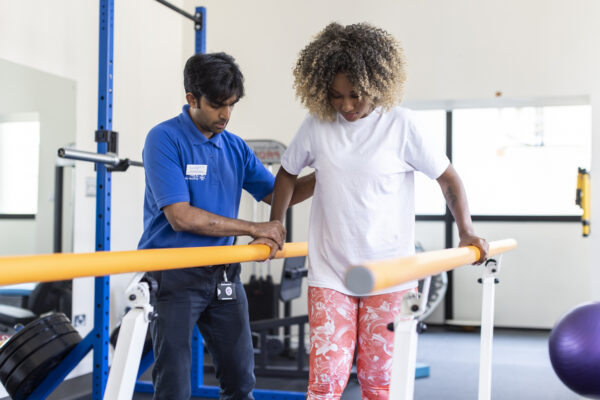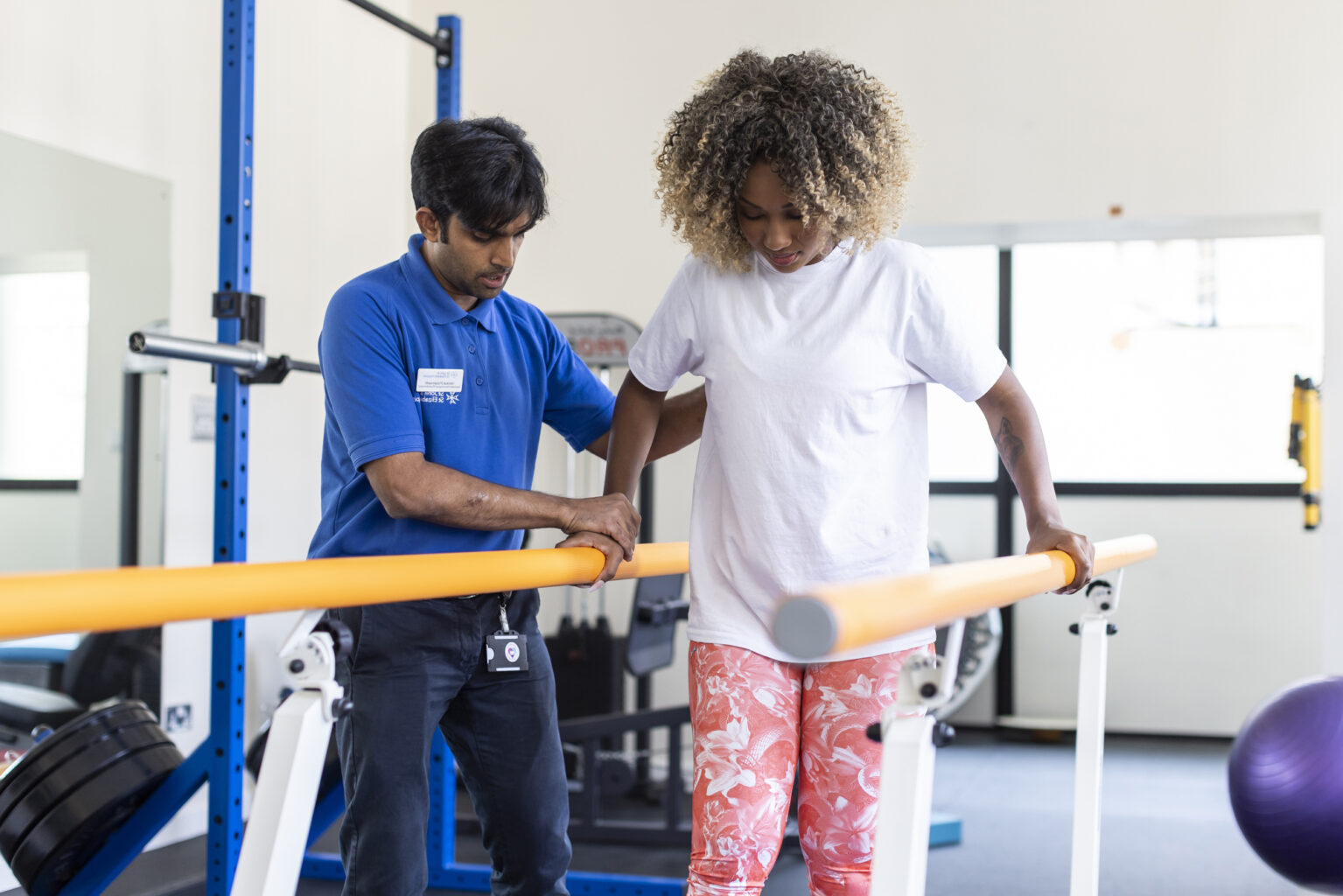Contact number: 020 7806 4060
What is Hip Resurfacing?
Hip resurfacing is a surgical procedure designed to treat joint damage caused by arthritis or injury. Instead of replacing the entire hip joint, the damaged surfaces of the femoral head and acetabulum are reshaped and capped with metal implants.
This approach preserves more of the patient’s natural bone compared to a total hip replacement, making it an ideal option for younger, more active individuals who may benefit from greater durability and range of motion.
Located in St John’s Wood (NW8), our hospital provides hip resurfacing surgery using state-of-the-art facilities and patient-focused care.
Hip Resurfacing at St John & St Elizabeth Hospital
At St John & St Elizabeth Hospital, our experienced surgeons take a personalised approach to hip resurfacing, carefully assessing each patient to recommend the most effective treatment for their condition.
Why choose us for hip resurfacing?
- Specialist Surgeons: Our consultants have extensive experience in hip resurfacing and other orthopaedic procedures.
- Bone-Preserving Approach: Hip resurfacing allows for improved durability and function while maintaining more of your natural bone.
- Modern Facilities: Our hospital is equipped with advanced technology to deliver precise and effective treatment.
- Convenient Location: Situated in NW8, we serve patients from Hampstead (NW3), Kilburn (NW6), and the wider London area.
We are dedicated to helping you achieve relief from hip pain and regain mobility through expert and compassionate care.
Surgeons who perform Hip Resurfacing Surgery in London
How Much Does Private Hip Resurfacing Cost?
£15,745
Hip Resurfacing costs £15,745 at St John & St Elizabeth Hospital.
The price shown includes all costs associated with your treatment, from admission to discharge, but doesn’t include surgeon or anaesthetist fee.
Hospital Fee Guaranteed: Our hospital fee is guaranteed at the price quoted and valid for one month from the date issued, subject to pre-assessment.
How to pay for your treatment
If you’re… paying for yourself
Did you know you don’t need private medical insurance to come to St John & St Elizabeth Hospital? As a self-pay patient, you can access safe, outstanding quality health care at times to suit you.
For scans and tests, as well as to see most consultants, you’ll still need to be referred by a medical professional like your GP, but as a self-pay patient, the process is more straightforward. You won’t need authorisation from an insurance provider, and you’ll have greater choice of consultant and appointment times.
If you’re… insured
St John & St Elizabeth Hospital is approved by all major medical insurance companies. If you have a personal private health insurance policy, or your company provide it for you, you can use it to pay for your care from your initial consultation through to treatment, surgery and aftercare such as physiotherapy. Not all private health insurance plans cover the same things. It’s very important to check exactly what you are covered for with your insurance provider.
Appointment
You will have an initial consultation with a lower limb orthopaedic surgeon.
Treatment plan
During this appointment, you’ll go through your medical history, the risk and benefits of surgery and what to expect from recovery. Together, you will decide whether hip resurfacing is the best option for you.
Pre-op assessment
If you decide to go ahead with surgery, you will need to come in for a pre-assessment, which is a standard ‘fitness for surgery’ check.
Surgery
The surgery itself should take a couple of hours. You will be able to walk the same day or the day after and can go home after 24- 48 hours.
Aftercare
You will need to keep your wound clean and dry, take pain relief and have physiotherapy consistently. You will not be able to fly short-haul for six weeks or long-haul for 12 weeks. We have an excellent therapies team at our hospital that can support you throughout your recovery.
Follow-Up
You will have a follow-up appointment with your doctor at two weeks, where stitches will be removed. You should also have follow-ups at 6 weeks, 12 weeks, 6 months and 1 year.
Frequently Asked Questions About Hip Resurfacing
St John & St Elizabeth Hospital is located in St John’s Wood (NW8), a well-connected area of North West London. We are conveniently accessible for patients from Hampstead (NW3), Kilburn (NW6), and beyond.
By Tube:
- St John’s Wood station (Jubilee Line) is just a 5-minute walk from the hospital.
- Finchley Road (NW3) and Kilburn stations (NW6) on the Jubilee Line provide excellent connections.
By Bus:
- Wellington Road: Routes 13, 46, 82, and 113 stop near St John’s Wood Underground Station, just a short walk from the hospital.
- Circus Road: Routes 46 and 187 stop close to the hospital’s Circus Road entrance.
- Abbey Road: Routes 139 and 189 stop near the junction where Grove End Road becomes Abbey Road, providing easy access.
Major Roads:
If you’re travelling from NW3 or NW6, major routes such as Finchley Road or Kilburn High Road offer a direct approach to the hospital.
Our hospital ensures convenient access for patients across London, particularly those in NW8, NW3, and NW6 postcodes.
The hip resurfacing procedure usually takes two to three hours, depending on the extent of the joint damage and the complexity of the surgery.
Once we’re happy you’re doing well, we will take you to your private room where you can start your recovery. You will usually be able to walk the same day or the day after; some patients will need a crutch or sticks for support.
During your stay, our nursing team will make regular checks to make sure your recovery is going to plan. You will also be visited by a physiotherapist and an occupational therapy if needed. Before you are discharged, you will need to be cleared by the physiotherapist and nursing team, have a check x-ray and blood tests. Your surgeon will also visit you and make sure you are happy. You will be able to go home after 24- 48 hours. It will take approximately two weeks for your wound to heal, and you should see your doctor at this point for a post-surgery check, where your stitches will be removed.
Recovery from hip resurfacing surgery involves a combination of rest, pain management, and physiotherapy. Most patients can resume light activities within four to six weeks, while full recovery can take three to six months.
You should also expect to be off work for around six weeks, but depending on your recovery, this could take a little longer – everyone is different.
During this time, you will need to build up your strength by walking and keep your hip mobilised with gentle movement. Consistently and regularly doing your physiotherapy rehab exercises is essential to your recovery. We have an excellent therapies team at St John & St Elizabeth Hospital that can support you throughout your recovery.
The overall period of rehab can take up to one year, but most patients do very well and can go back to work after around 6-8 weeks.
Hip resurfacing is not necessarily “better” but may be more suitable for younger, active patients who require a durable solution while preserving more bone. Your consultant will recommend the best option based on your age, activity level, and condition.
Overall, a hip resurfacing procedure will offer:
- better stability
- reduced risk of dislocation
- a broad range of movement
- higher levels of activity
- less hip pain
A hip resurfacing procedure isn’t designed to replace a hip replacement surgery. However, data shows the results can last just as long as, or even longer than a total hip replacement.
Hip resurfacing preserves more natural bone, offers greater durability for active lifestyles, and can provide an improved range of motion compared to traditional hip replacement.
In the weeks following an operation, patients have a slightly higher risk of a blood clot, so will need to avoid flying. You should wait six weeks before taking a short haul flight (under six hours) and 12 weeks before taking a long-haul flight
Medically reviewed by Mr Sujith Konan - MBBS MD(res) MRCS FRCS(Tr&Orth), Honorary Associate Professor (UCLH)


